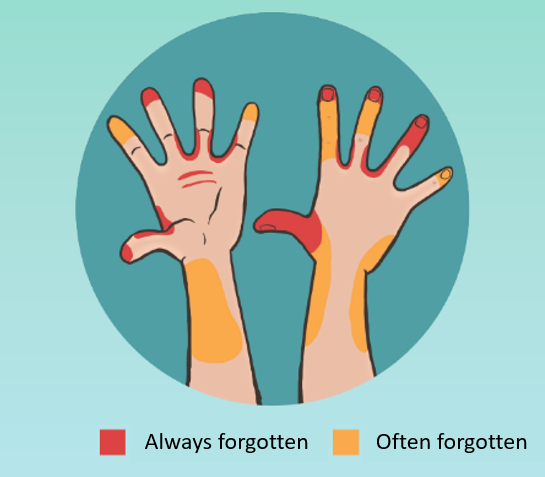If you need immediate help (e.g., in the case of an acute, life-threatening injury) call the Emergency Services (Tel: 1-1-2). You can call this number 24 hours a day, every day.
If you have been injured, always call the Emergency Telephone Number 1818 before you proceed to the Emergency Room to meet with someone from the Emergency Department.
Kalundborg Medical Clinic takes care of the emergency treatment of injuries. Here you can treat minor injuries such as cuts, sores, minor burns and sprains. The nurse who will answer the Emergency Telephone Number above will evaluate where you can receive the appropriate treatment.
The Medical Clinic in Kalundborg is open weekdays between 14:00 – 22:00, and weekends between 10:00 -20:00. The Medical Clinic is staffed with specially trained nurses. It is located within the Kalundborg Health and Emergency Center, Nørre Allé 31, 4400 Kalundborg.
Outside opening hours at Kalundborg Medical Clinic you will be referred to Holbæk Hospital, Emergency department / Emergency room, Entrance A, Smedelundsgade 60, 4300 Holbæk. Here it is open 24 hours and the emergency room is staffed with doctors and specially trained nurses.
If you require medical treatment, a fellow student or University employee can accompany you to the hospital. Give as much comprehensive and complete information as possible to the doctors. If the accident is caused by a reagent /chemical - bring instructions on how to deal with it (i.e., the appropriate Material Safety Data Sheet).
If the injury is less serious, you can use a taxi (e.g., Kalundborg Taxi 59 51 51 51) to drive you to the medical clinic. If you pay yourself then get a receipt.
Remember that any accidents and safety incidents are to be reported to the Occupational Safety Group at UC Absalon, Center for Engineering.
Intervention for all accidents
Contain and minimise the damage. Initiate first aid. Call for help.
The staff are instructed and trained in the safety regulations, but everybody who is able to should help the best they can in any given situation.
If necessary, call an ambulance (Tel: 112). The address of the school building is:
Professionshøjskolen Absalon
Campus Kalundborg 4, 4400 Kalundborg.
Send a person to meet the ambulance.
Corrosion in eyes:
1) Rinse IMMEDIATELY with cold tap water - with eyelids pulled wide. Remove any contact lenses / rinse away. There are also special showers that can be used for eye washing. These are located at the washbasin in the laboratory.
2) Eyewash bottles are located in the rack on the wall in the laboratory.
3) The person should be sat or laid down, the rinsing continued with an eyewash bottle – for at least another 15 minutes.
4) Additional eyewash bottles can be collected if necessary
5) Take the injured person to the nearest medical clinic’s emergency room if required. Continue rinse during transport. Continued and copious rinsing is the best course of action - it is more important to rinse continuously than to get to the hospital very quickly. Be sure to bring the name of the chemical and if possible the chemical safety data sheet.
6) After the damage is contained be sure to order new eyewash bottles
Bases give more serious burning than acids, therefore rinse for a longer period of time when the injury results from a basic chemical.
Corrosive chemicals on the skin should be rinsed off IMEDIATELY with temperate cold tap water. Rinse for a long time, use the tap or emergency shower depending on the extent. Basic chemicals results in deeper burns than acids therefore should the period of the wash be longer.
Bases burn deeper than acids, therefore you must rinse for a longer time.
The burned skin should be cooled with water. Keep cooling in water until the wound no longer hurts when the burned skin is in the open air – this may take some hours. In case of blisters in the affected area, seek medical advice.
Put out a fire in the hair or on clothes using the emergency shower located at the sink at the entrance to the laboratoryin the desk in the middle of the room B03. In some cases, the use of a fire blanket, towel or a coat may be faster. Remember always to use water after a fire blanket to ensure the extinguish and cool the area.
Smaller Fires -: Depending on the situation – are put out with a wet towel or a. Alternatively, a fire blanket. or cCarbon dioxide
(CO2)/ABC powder fire extinguisher may be used but never against a person.
Carbon dioxide fire extinguishers (also called CO2 extinguishers) can be found in every laboratory.
and ABC powder fire extinguishers are located at KalA0.01, .02 and .05. These must not be used against humans.
ABC powder shutter fire extinguisher is used for extinguishing ABC fires as well as electrical installations and appliances::
A fires (wood, paper and textiles)
B fires (flammable liquids)
C fires (gases)
Carbon dioxide fire extinguishers are best used for electrical installations and appliances.
Do not use water against electrical installations and appliances.
Uncontrollable Fire:
Evacuate the area. Make sure that everyone is out of the room. Close the door (if possible, turn off any gas supplies and close all the windows).
Call the emergency services (Tel: 112). Make sure there is someone to direct the fire department when they arrive, and explain the location of the fire.
Get everyone to leave the building. Follow the evacuation signs in the hallway.
